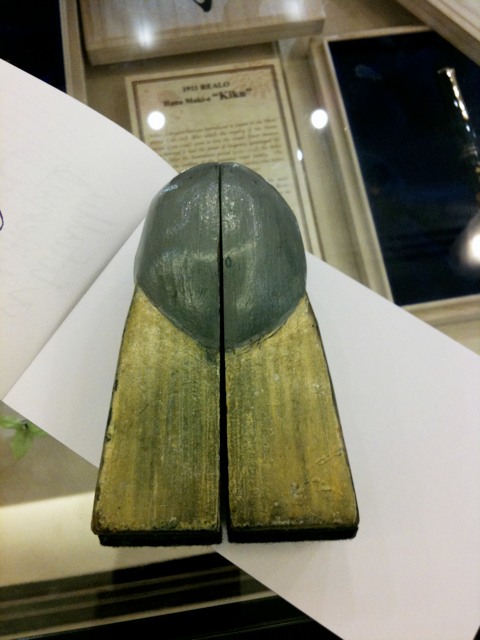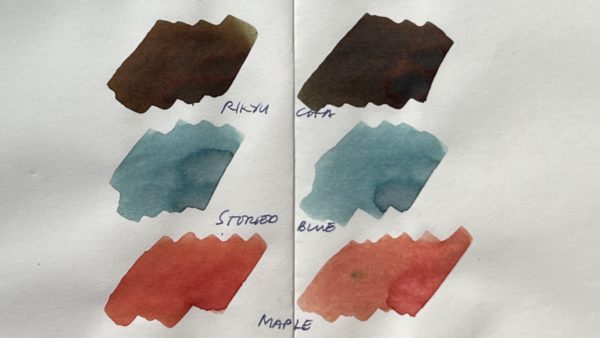If your fountain pen stops working, you: check if the converter has worked loose; calculate the viscosity of the ink; flush the nib and feed with a 1/10th solution of ammonia in tepid water; use a syringe to force water through the feed; inspect tine alignment; wiggle a sheet of paper in between the nib and the feed to see if there’s too much of a gap; email the seller to demand a refund; bring it to a nibmeister.
I met Yukio Nagahara, son of Nobuyoshi Nagahara, in the Sailor Pen Clinic sponsored by Aesthetic Bay in Singapore. The elder Nagahara is a legend in the fountain pen world, as is his son. Their exacting attention to the creation, production and tuning of specialty nibs ensures a flock of fans at every pen show they attend. This clinic was no exception. I was lucky to have enough free time to hang around and wait my turn.
Many customers weren’t there, but had their pens waiting in line. Nagahara-san worked on nib after nib. He would flush the feed, work the nib and feed out from their collar (if there was a colllar), assessed what could be done, and got to work. (His grinding machine is bespoke. He uses a camera lens blower to flush sections.)
They handed out a quick guide to the specialty Nagahara nibs. These were all available on the other counter for customers to experience.
He told Mr. Tan, the shop owner, that nothing was impossible. A lady came in on the first day with a request: could the nibmeister make her nib a comfortable writer for both English and Hindi? He solved it by grinding the left and right sides of the nib differently – one angled for Western letters, the other for Hindi. He did raise his eyebrow at one request to grind a zoom nib into a cursive italic. I saw the request and said, oh no, don’t! (If you want a cursive italic, have it done from a Sailor broad or music nib instead.)
The large disc in the foreground is a very fine abrasive disc that Nagahara-san uses to floss between the tines. The black burnisher on the right seems to be just the thing for straightening bent nibs.
Yes, he really does have a giant wooden nib mock-up. It’s made of painted wood. Inside, there are magnets.
I expect he uses this to explain writing angle, how the nib is supposed to come into contact with paper, and all of that, but I can’t take a nib as humongous as this with any level of seriousness.
I met a lot of wonderful fountain pen fans, and if ever a trip of mine coincides with a Singapore pen meet, I’m crashing it. 🙂 For more on the Sailor Pen Clinic (including video!), drop by the Fountain Pen Network thread.
While waiting, I couldn’t help but gawk at all the other pens. That’s for another blog entry.









